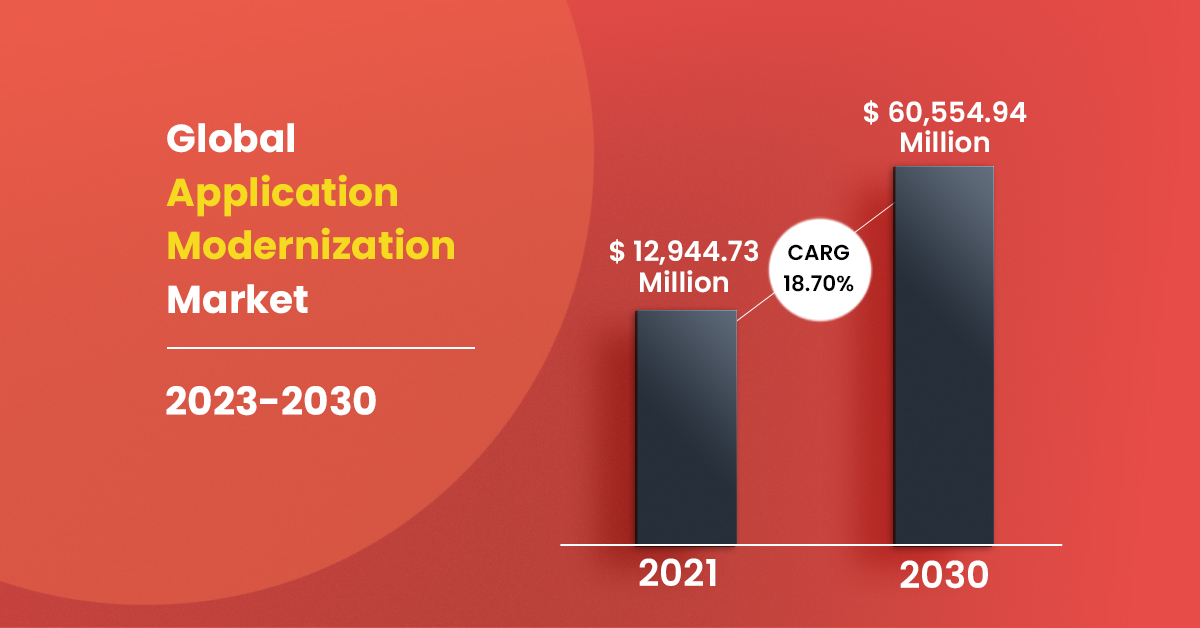In today’s fast-paced digital age, businesses need to keep up with the ever-changing demands of the market. One of the most crucial aspects of this evolution is the modernization of legacy systems. These outdated systems may have been effective in the past, but they can become a hindrance to growth and progress. To stay ahead of the competition, businesses need to adopt future-ready applications that can keep up with the pace of innovation. Application modernization is the key to achieving this goal.
What is application modernization?
Application modernization is the process of upgrading legacy applications to modern, cloud-based platforms that are flexible, scalable, and easily customizable. It involves replacing outdated code, technologies, and architectures with modern ones. The goal is to improve the efficiency and agility of the application, reduce maintenance costs, and enhance user experiences.
The importance of application modernization
Application modernization is essential for businesses to stay competitive in the long run. As technology advances, legacy systems can become a hindrance to growth and progress. In some cases, legacy systems may even pose security risks and compliance issues. By modernizing applications, businesses can streamline their operations and improve efficiency. They can also provide better customer experiences, which can help them stay ahead of the competition. That is why the market for Application Modernization had a worth of USD 12,944.73 Million in 2021, and it is estimated to increase to USD 60,554.94 Million by 2030, with a compound annual growth rate (CAGR) of 18.70% from 2023 to 2030 according to a report by Verified Market Research.
The risks of sticking with legacy systems
Sticking with legacy systems can be risky for businesses. As technology advances, legacy systems can become outdated and pose security risks. They may also require more maintenance and support, which can be time-consuming and costly. In some cases, legacy systems may not be able to integrate with modern technologies, which can limit the functionality of the application.
Related Web story:- The Business Benefits of Application Modernization
Benefits of modernizing applications
Modernizing applications can have many benefits for businesses. It can help them reduce maintenance costs, improve efficiency, and provide better customer experiences. By modernizing applications, businesses can also take advantage of modern technologies like cloud computing, which can provide better scalability and flexibility. Modernized applications can also be easily customized to meet the specific needs of the business.

Steps to modernize your applications
Modernizing applications can be a complex process, but there are some basic steps that businesses can follow. The first step is to assess the current state of the application and identify areas that need improvement. Next, businesses should create a plan for modernizing the application and set clear goals and timelines. The next step is to choose the right modernization approach, which can vary depending on the complexity of the application. Businesses should also choose the right technology platform and tools to support the modernization process. Finally, businesses should test and deploy the modernized application to ensure that it meets the needs of the business.
Different approaches to application modernization
There are several different approaches to application modernization, each with its own benefits and drawbacks. The first approach is rehosting, which involves moving the application to a new platform without making any changes to the code. This approach is relatively quick and easy, but it may not address all of the issues with the legacy system. The second approach is replatforming, which involves moving the application to a new platform and making some changes to the code. This approach can provide some benefits, but it may not be enough to fully modernize the application. The third approach is refactoring, which involves rewriting parts of the code to improve performance and functionality. This approach can be time-consuming and expensive, but it can provide significant benefits in terms of improved efficiency and functionality.
The role of cloud computing in application modernization
Cloud computing is playing an increasingly important role in application modernization. Cloud-based platforms can provide businesses with better scalability, flexibility, and cost-effectiveness. They can also provide businesses with access to modern technologies like machine learning and artificial intelligence. Cloud computing can also provide businesses with better security and compliance, which can help them stay ahead of the competition.
Challenges of application modernization
Application modernization can be a complex process, and there are several challenges that businesses may face. One of the biggest challenges is the cost of modernization, which can be significant. Businesses may also face challenges in finding the right talent and expertise to support the modernization process. In some cases, businesses may also face resistance from employees who are used to working with legacy systems.
Best practices for successful application modernization
To ensure the success of application modernization, businesses should follow some best practices. These include setting clear goals and timelines, choosing the right modernization approach, selecting the right technology platform and tools, and testing and deploying the modernized application. Businesses should also involve employees in the modernization process and provide training and support to ensure a smooth transition.
Conclusion
Application modernization is essential for businesses to stay competitive in today’s digital landscape. It can help businesses reduce maintenance costs, improve efficiency, and provide better customer experiences. By following best practices and choosing the right approach, businesses can successfully modernize their applications and stay ahead of the competition. With the help of cloud computing, businesses can take advantage of modern technologies and stay ahead of the curve. By embracing application modernization, businesses can future-proof their applications and ensure long-term success.




